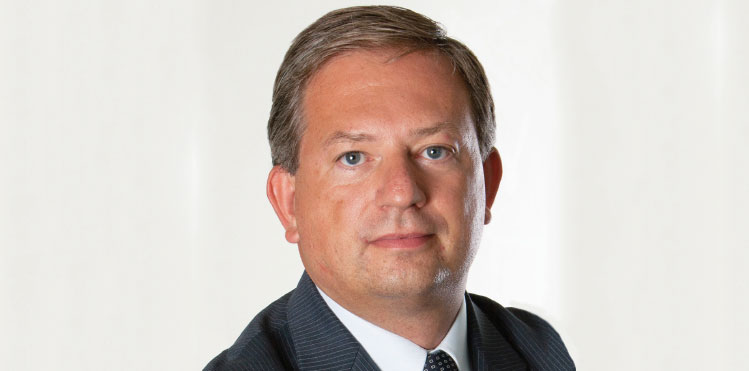
Dave Bakker, EURO President, SITA: “The 2015 EURO ICT Forum will provide insights into the technologies that will play a major role in addressing the growing expectations of connected travellers.”
Technology is improving the passenger journey in many ways. Dave Bakker, EURO President, SITA, shared his insights into how it is being used to enhance the experience of connected travellers with Ross Falconer.
Technology is playing an increasing role throughout the end-to-end travel experience. The 2015 SITA Passenger IT Trends Survey shows that the proportion of passengers carrying smartphones has risen to 83% from 81% last year, while 15% travel with three mobile devices – mobile phone, tablet, and laptop. Dave Bakker, EURO President, SITA, said that these connected travellers are happiest when using their own devices throughout their journey.
With this in mind, SITA’s EURO ICT Forum, taking place in Athens, 28-29 October 2015, will provide insights into the technologies that will play a major role in addressing the growing expectations of connected travellers.
Airports are committed to improving the passenger experience through a wide range of technologies. Beacons, for example, are set to join smartphones in transforming the way passengers receive and digest information in the terminal. “Their location-awareness capability provides a unique opportunity for airports – when an app on a passenger’s smartphone detects the signal by moving within range of the beacon, it can trigger an action in the app taking account of the passenger’s location,” Bakker explained. “The great thing about beacons is that airlines, retailers and other airport partners’ apps can all trigger useful content for passengers.”
SITA has launched the Common-Use Beacon Registry, which means a single set of beacons can be used; airlines, retailers, and other service providers, can all provide beacon-based services without incurring the cost of installing beacons. “As well as cost-cutting, the IT is simpler and eliminates the need for everyone to manage their own beacons,” Bakker added.
Wearable tech to feature prominently

SITA has run successful trials of Google Glass with Virgin Atlantic at London Heathrow.
There is potential for wearable tech to both improve the passenger experience and streamline operations. Findings from the 2014 SITA Passenger IT Trends Survey suggest wearable tech will feature prominently in the future. Nearly 77% of the passengers surveyed said they would be comfortable with airline or airport staff using wearable tech to help them on their journey. “Whether it’s a personal wearable device, or one being used by airport/airline staff, there is clearly an appetite for wearables in the airport context,” Bakker commented. “Wearable tech currently being used/trialled includes smartwatches for boarding pass storage, and Google Glass for check-in. For example, SITA has run successful trials of Google Glass with Virgin Atlantic at London Heathrow. We have worked with Copenhagen Airport to test Google Glass as a customer relationship management tool.”
Meanwhile, Abu Dhabi Airports has selected SITA technology for its new Midfield Terminal, which opens in 2017. SITA’s next generation airport management system, common-use passenger processing platform, automated boarding gates, flight information display systems, and baggage management services will underpin how the operations, including passenger management, will be run. “What passengers can expect, and what the IT support system SITA is putting in place aims to achieve, is an easy and quick journey through the airport – from check-in to flight information displays, and efficient baggage management,” Bakker explained.
Looking ahead, tomorrow’s airport will embrace technology to deliver more responsive operations, and use mobile technologies to deliver personalised experiences to passengers. This ‘intelligent airport’ will also use passenger flow management that not only speeds the passenger through checkpoints and boarding, but also allows the airport to work with retail partners to increase revenues.
“We will be exploring this future at our 2015 EURO ICT Forum, discussing the technologies that will play a major role in addressing the growing expectations of connected travellers, and examining the changing air transport operations as aviation becomes increasingly connected,” Bakker concluded.







